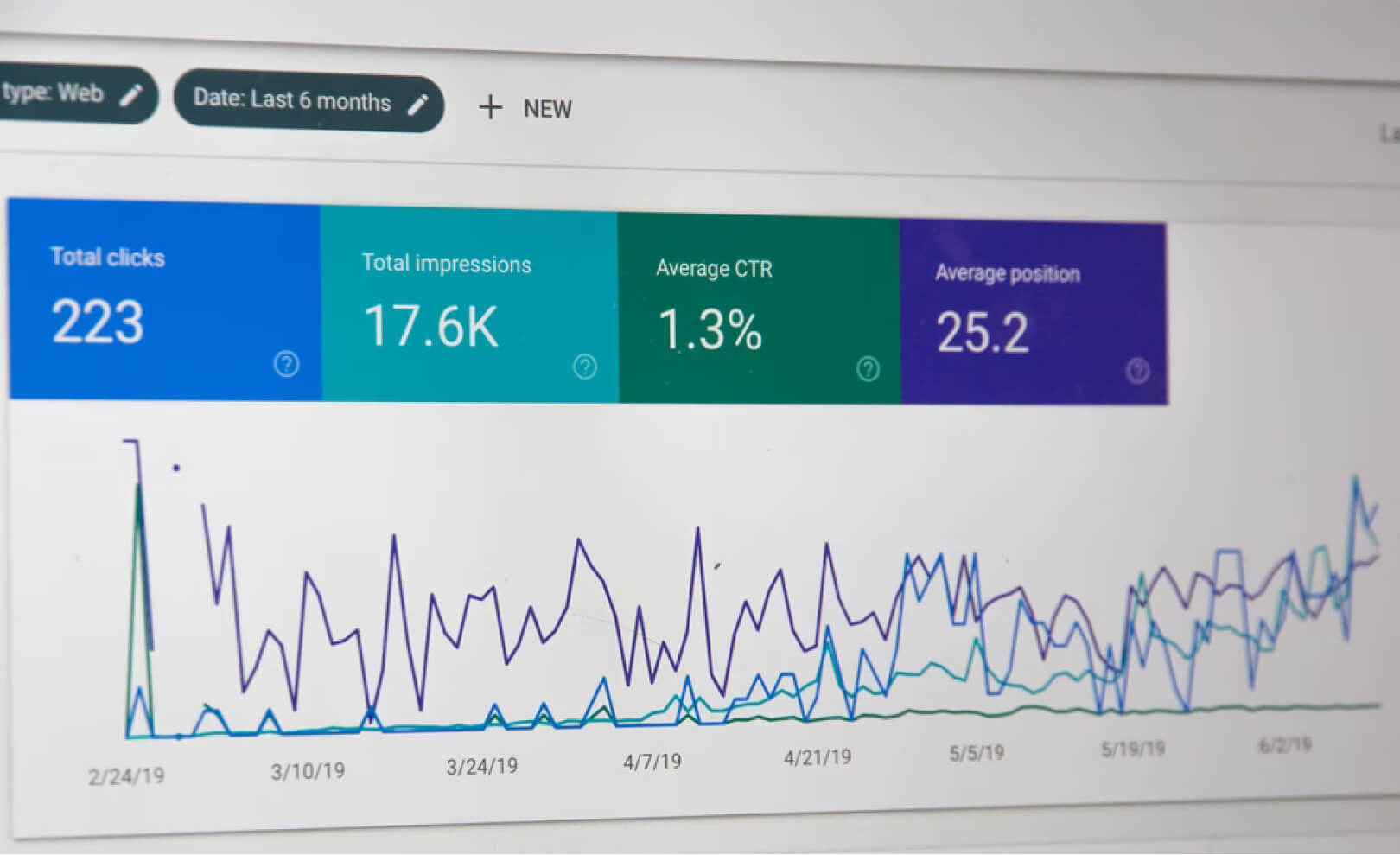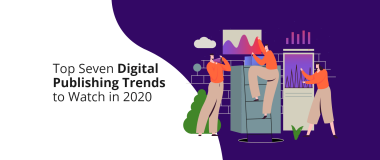Digital publishing is a dynamic industry and there are always new and emerging trends to keep up with. In 2022, the marketplace will continue to evolve and provide opportunities for small and medium-sized publications to better engage their audiences, increase loyalty, and scale upwards.
Current events have contributed to people spending more time online and increasing their digital content consumption. Furthermore, audiences have become more consistent when following their preferred information outlets. In fact, this year we can anticipate more traffic surges, a boost in engagement and SEO, strong development of niche publishing, a cookieless world, and, last but not least, a strong competitive advantage in aggregated content platforms such as Google News.
To provide more in depth knowledge about how the digital publishing industry will evolve, in this article, we will share seven pivotal digital publishing trends to follow in 2022.
1. SEO – The King of Traffic

There are different types of digital publications circulating the web – news, magazines, pop culture blogs, etc. What they all have in common is that to build their revenues, they need to regularly share content and properly monetize it. To that end, they need to build a loyal audience, and to make this happen, they need to make sure that their information reaches the right readers. This is where SEO comes in.
However, there are still publications that struggle to optimize their SEO, and, therefore, their pages have limited visibility in the SERPs. To ensure that they maximize their reach and traffic, it’s essential that they invest in Search Engine Optimization and follow the latest SEO trends and practices.
In 2022, we can expect publishers to optimize their website information architecture for an improved user experience, and focus on SEO in order to attract more readers. In addition, we will likely also see better web design where the content is not only redistributed, but visually enhanced in ways that allow readers to find and interact with it easier.
Related: How to Improve the Technical SEO of a WordPress Website
Furthermore, more and more publishers will probably rely on SEO best practices combined with Al technologies for better targeting and audience engagement.
2. Finding Alternative Advertising Solutions for the Cookieless World

In mid 2021, Google announced the postponement of their plan to phase out third-party cookies in their Chrome browser until the second half of 2023 (a year later than initially anticipated). Meanwhile, other browsers like Safari and Firefox had already taken actions in this direction by implementing default blocking against third-party tracking cookies data. Additionally, Apple had also released a new policy that restricted advertisers like Facebook from tracking user behavior on their devices, and enabling the removal of email open tracking.
Related: Cookieless Adtech, User IDs and Solutions for Publishers
At the same time, the pandemic caused a shift in commerce and user behavior to digital, and ad-supported platforms like Amazon, Google, and Facebook, who are experiencing a surge in advertisers competing for ad spaces. As a result, ad costs have increased. This created a competitive environment for both publishers and advertisers, and using digital ads will remain a solid revenue source in 2022.
However, it’s not too early for digital publishers to start preparing an action plan for when cookies are finally out of the picture.
Two common trends that we can therefore witness in 2022 will be:
3. Adapting to programmatic advertising for better ad cost management.
4. Introducing transparency of how data and ad costs are being handled.
Dora Michail-Clenndinnen, chief strategy officer at The Ozone Project, shared in an interview for The Drum that transparency in programmatic advertising will play an important role for both publishers and readers.
From a business point of view, transparency in digital ad spending will be crucial for allowing smaller publishers to get their cut of the pie. And from a consumer’s standpoint, it will allow for educating readers on data ethics and the importance of knowing how their data is being handled.
3. Niche Publishing on the Rise

In general, the idea of growing a business through industry specialization is not new. However, it is a growing trend with digital publishers. Sharing in-depth knowledge and reliable information in a particular area can provide publishers with a competitive advantage and allow them to build a large following and a loyal audience.
In fact, according to Web Publisher Pro, niche publications are expected to become even more popular as readers show strong preferences for outlets that concentrate specifically on a few but relevant topics.
To be successful in 2022, publishers will have to find a way to put the Pareto Principle in practice – i.e. that 20% of their content contributes to 80% of their revenue. By figuring out what the 20% are, they can identify their niche and focus on creating quality content. This way, 20% of all their effort can be dedicated to the topics that generate the best results.
Related: WordPress Publishing Explained: Key Revenue Growth Techniques
4. Building Brand Loyalty One Community at a Time

In 2022, publishers will have to focus on strengthening brand loyalty through community building.
The pandemic has left people feeling the need to belong to digital communities in order to compensate for their offline personal life. In addition, they crave current, up-to-date, and reliable information. This all adds up to them seeking information sources they know they can trust and rely on consistently.
We can anticipate that, to answer the audience’s needs, many publishers will start building their own community platforms, such as Medium and SmartOcto, and focus on collecting relevant user data for better segmentation and, respectively, content delivery.
According to Rupert Collins-White, the content director of Burlington Media Group, this would mean that more digital publishers will lean on building improved and better branded websites that use WordPress as the preferred content management system (CMS). This in turn will support high-quality editorial content and authentic storytelling.
Related: 12 Big-Name Publishers with WordPress-Powered Websites
Furthermore, there is still a predominant group of people who rely on news from social media platforms. And with so much content being pumped out there every second, people find it hard to know who to trust.
To consolidate their authority as a reliable and credible source of information, publishers will have to invest in building a strong social media presence and branding. This will allow them to grow an audience of loyal readers and create an even stronger community.
5. Attracting Younger Generations

According to AdvantageCS, one of the big challenges that digital publishers will have to overcome in 2022 is appealing to younger demographics – Gen Z to be exact.
Older generations, like millennials and Gen Y, consume written and audio media content on a regular basis. What’s more, since the beginning of the pandemic, they have made a major switch from print to digital.
However, Gen Zers (youngsters born roughly between 1997-2012) are highly immersed in social media. This means that, to extend their influence, publishers now more than ever need to implement a social media-centered strategy.
Research by the Reuter’s Institute has discovered that social media is where 57% of Gen Z obtains their news from. Young readers are used to scrolling through loads of information every day and really engaging l only if they find the content interesting.
To stand out, we can expect digital publishers to leverage more than one social media channel (Instagram, TikTok, Snapchat, YouTube) and embrace short form visual and audio content.
6. Audio – the New MVP of Content

Over the past few years, audiobooks and podcasts have become an instant hit with millions of readers. According to Statista, in 2020, audiobooks reached a revenue of $1.3 billion in the United States, accounting for a 20% share of the customers from key consumer demographic aged 18-44.
The reason why audio content has become so popular is because it enables people to enjoy a book without fully paying attention. As a result, they can go hands-free and utilize their time more productively, while listening to their favorite content.
In addition, the technology provides significant advantages to visually impaired people and enables them to interact with content.
While digital publishers do not necessarily have to produce a full-bodied podcast show, they should consider adapting to audio the content they’ve already produced.
Considering the high interest in audiobooks and podcasts, we can anticipate more publishers to hop on this trend in 2022.
7. Remaining Competitive on Google News

Most media publications, especially digital news outlets, have to fight an ongoing battle to ensure that their content appears in Google News and Top Stories. Not only do they have to produce high-quality, relevant, authentic, and trustworthy content, but they also need to be on top of their SEO game to ensure engagement.
Since 2019, once published, every news article from a digital media outlet is automatically considered for Google News. Its position is determined algorithmically and is based on: prominence, relevance, authoritativeness, freshness, location, and language.
However, considering that readers now spend more time in the digital space, Google News introduced a new update to its algorithm that incorporates machine learning (ML) technology when analyzing and correlating user behavior and content. With the help of ML, the platform can organize stories in real time based on user preferences and past behavior, in order to provide the most relevant content at all times.
Related: How Artificial Intelligence Affects Digital Marketing
The focus of Google News is now on factors such as usability, and the person’s interests and publisher preferences. The goal is to ensure that readers can easily find a variety of accurate information that can help them learn more about topics they are following.
With all of this in mind, if digital publishers want to remain competitive on Google News in 2022, they have to:
- Secure and maintain a high authority and trustworthiness score.
- React swiftly to the latest news.
- Provide quality independent journalism and a unique point of view.
Wrapping Up
2022 will be a big year for online media outlets. Overall, we can anticipate that the digital publishing industry will evolve significantly when it comes to adapting to user preferences and behaviors.
From stepping up their SEO game and leveraging programmatic advertising; to strengthening brand loyalty through niche publishing and community building, there are so many exciting transformations taking place this upcoming year.
So, whether you already are part of the publishing world or just starting out, we suggest watching out for these seven pivotal digital publishing trends.




